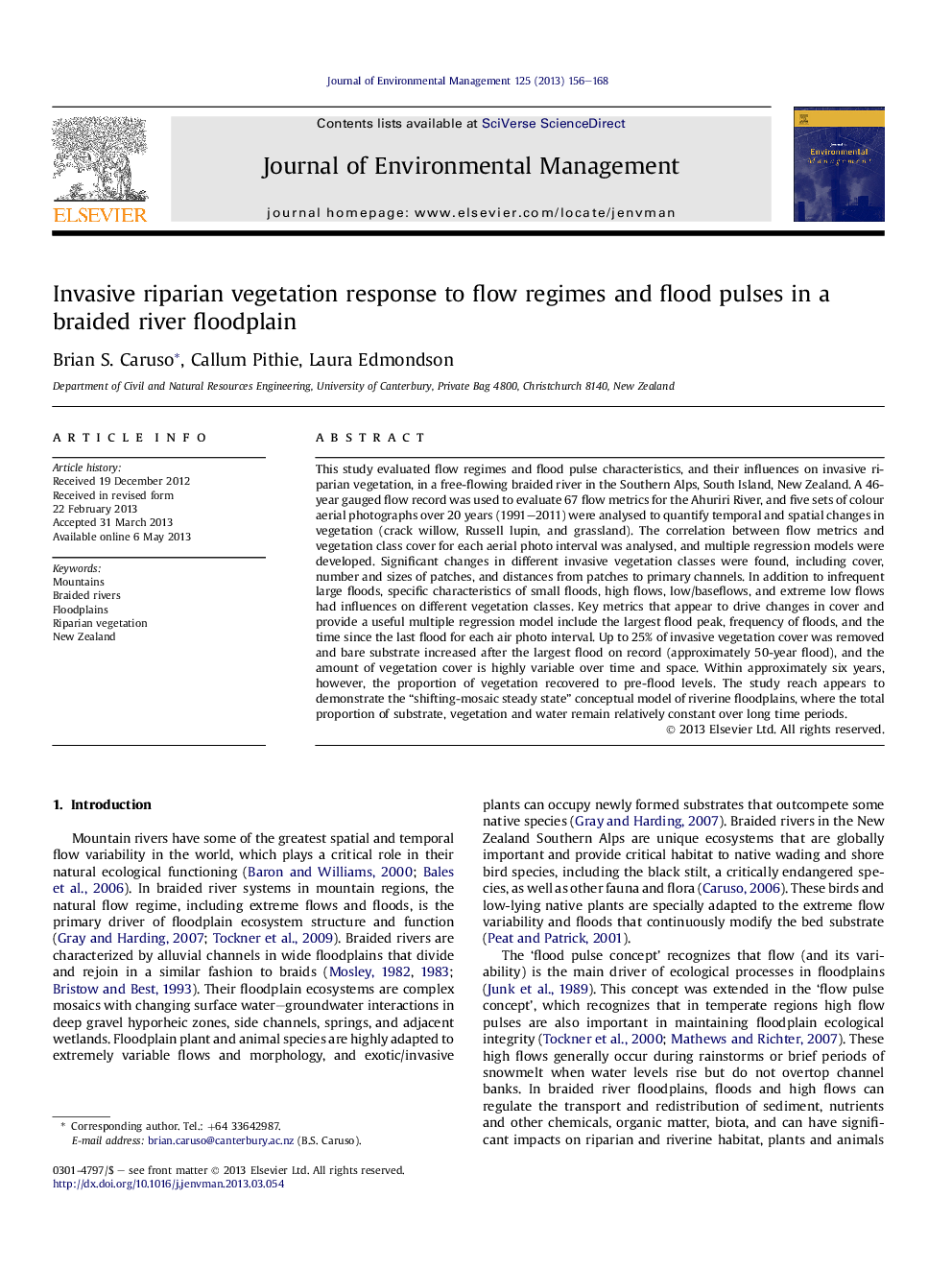| کد مقاله | کد نشریه | سال انتشار | مقاله انگلیسی | نسخه تمام متن |
|---|---|---|---|---|
| 1055897 | 1485287 | 2013 | 13 صفحه PDF | دانلود رایگان |

• New Zealand braided river floodplains are critical habitat for endangered birds.
• Invasive vegetation is a widespread problem in these floodplains.
• Analysis of flow data/floods showed the 50-year flood can remove 25% of vegetation.
• There is preferential removal among species and some can recover rapidly.
• The floodplain exhibits the ‘shifting mosaic steady state’ concept.
This study evaluated flow regimes and flood pulse characteristics, and their influences on invasive riparian vegetation, in a free-flowing braided river in the Southern Alps, South Island, New Zealand. A 46-year gauged flow record was used to evaluate 67 flow metrics for the Ahuriri River, and five sets of colour aerial photographs over 20 years (1991–2011) were analysed to quantify temporal and spatial changes in vegetation (crack willow, Russell lupin, and grassland). The correlation between flow metrics and vegetation class cover for each aerial photo interval was analysed, and multiple regression models were developed. Significant changes in different invasive vegetation classes were found, including cover, number and sizes of patches, and distances from patches to primary channels. In addition to infrequent large floods, specific characteristics of small floods, high flows, low/baseflows, and extreme low flows had influences on different vegetation classes. Key metrics that appear to drive changes in cover and provide a useful multiple regression model include the largest flood peak, frequency of floods, and the time since the last flood for each air photo interval. Up to 25% of invasive vegetation cover was removed and bare substrate increased after the largest flood on record (approximately 50-year flood), and the amount of vegetation cover is highly variable over time and space. Within approximately six years, however, the proportion of vegetation recovered to pre-flood levels. The study reach appears to demonstrate the “shifting-mosaic steady state” conceptual model of riverine floodplains, where the total proportion of substrate, vegetation and water remain relatively constant over long time periods.
Journal: Journal of Environmental Management - Volume 125, 15 August 2013, Pages 156–168